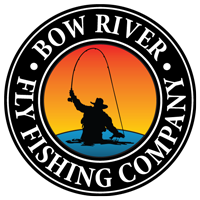Spring Fly Fishing on the Bow River: A Guided Perspective
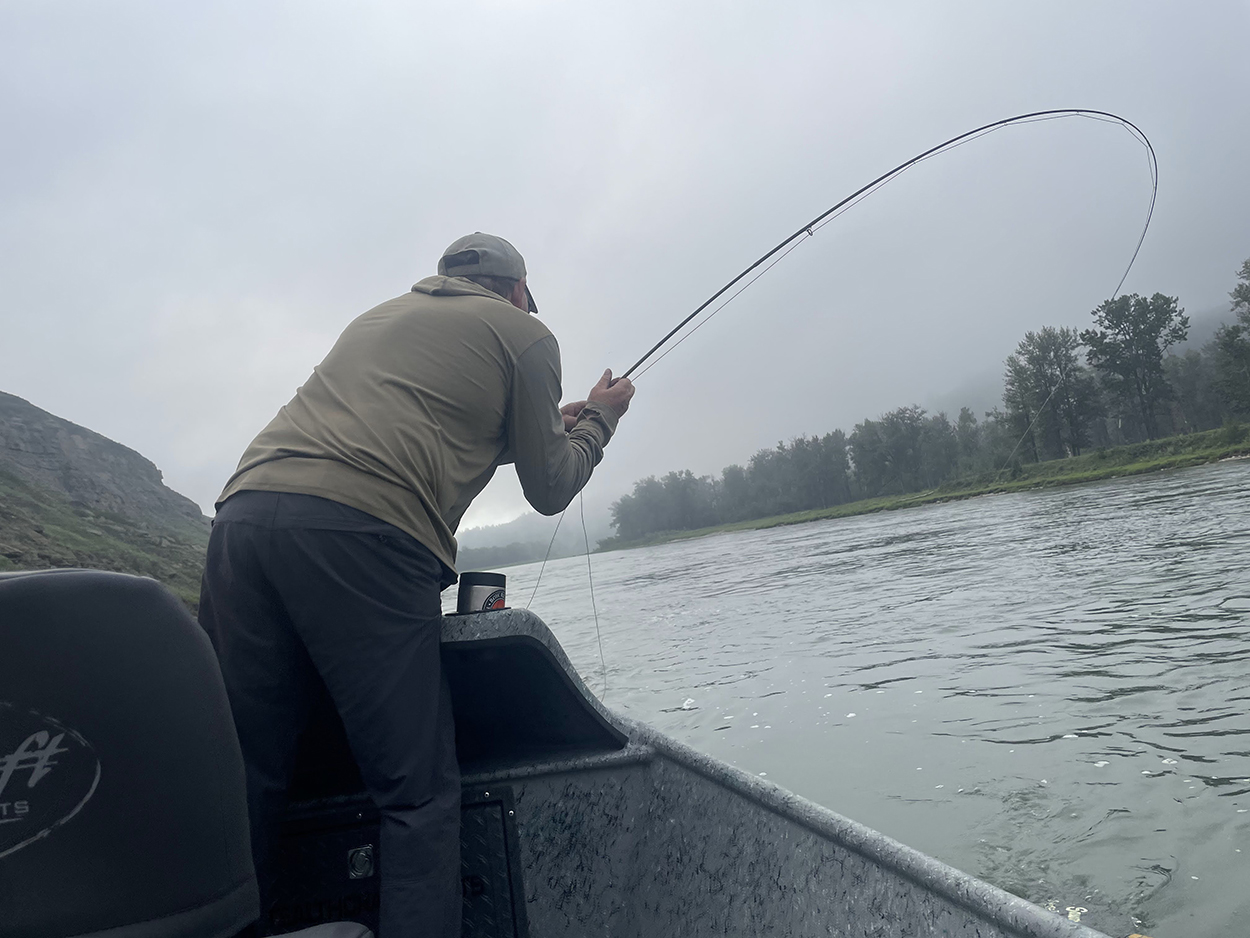
Well, the spring fly fishing season is finally here! I must admit I’m not a winter fly fisher but as soon as the sun starts to warm my face, I am just itching to get on the river! The boat gets a work over and a shine, all the gear gets checked, new lines are added where necessary and by now the fly boxes are re stocked. Looking at the calendar we have some early season floats booked with our buddies and fellow guides before we get into the heart of the season and won’t have time to fish.
Learning New Skills and Shaking Off The Rust
Spring gives me the opportunity to jump into lessons. I love getting new and aspiring fly fishers on the water. Watching folks progress with their casting stroke, understanding where to find fish and become proficient with knot tying and fly selection is a great reward as a teacher. I always love seeing pictures and hearing tales of your adventures after you leave us. Our hope is always that the lessons are a great beginning for you.
We’re happy to start at the beginning or work with you on specific challenges to help up your game.
We throw a lot of information at students during our time together, so I put together a 50-page book to accompany our beginner’s fly fishing course. It covers everything in what I hope is an easy-to-follow format…and there’s pictures!
We’re different, in that our class size is a maximum of two students. We offer a half day “boot camp style” experience, and you’re hands on from start to finish. Our classroom is on the riverbank and yes, there are trout holding at your feet. You might just hook up!
Check out our fishing packages and see if this is for you. We’d love to see you!
Spring Fly Fishing – What to Expect
Water flows are still on the low side. Some slow run off will start and we may see some off-colour water from the late season snowstorms. This is typically short-lived. April in Alberta can be great weather, but we could also be in a blizzard. In April, we’ll find fish in their wintering holes. So, a deep nymph rig with a leech as one of your offerings is never a bad choice. A worm and a pheasant tail will also produce when fished at the right depth.
If you’re going to fish a streamer, which I always enjoy, slow that bad boy right down as you move it through the zone. I like a white or tan #2 or #4 classic Woolly Bugger. As the water warms and the bugs start to get more active, you’ll see some BWO’s and some fish up on them. Remember, the midges are always around, so don’t be afraid to tie on a Griffiths Gnat. Around mid-April, we start to see the fish move around as the water and air temperatures become consistently warmer. Remember though, this is Mother Nature. Her clock doesn’t match our fishing expectations.
May often offers some fantastic fly fishing and we can see a wonderful Caddis hatch for about a week. If you hit it right, it’s epic. Do the kids still say epic?
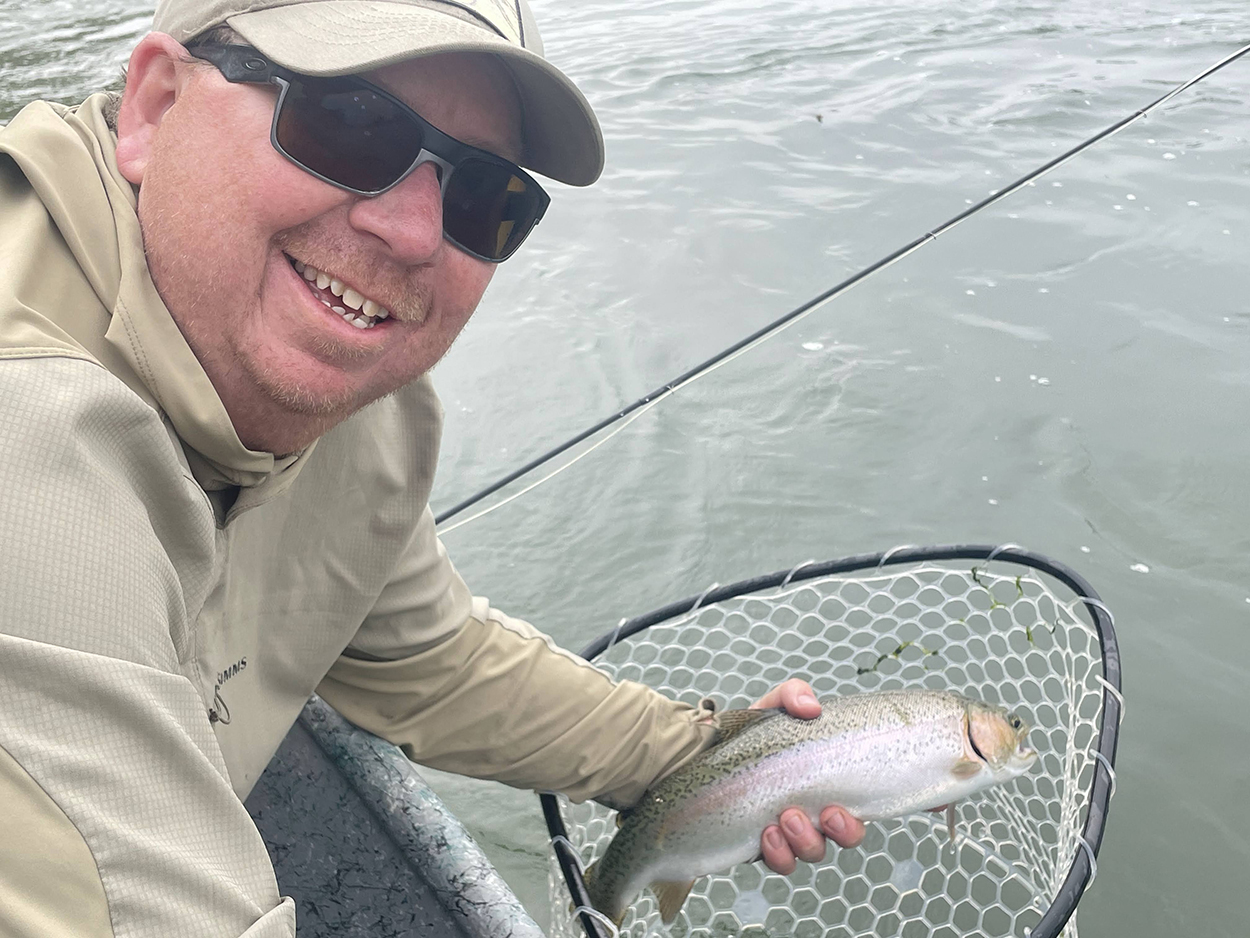
Keep in mind the Rainbows are moving out of the system to spawn, so you’ll see more 16” to 18” Rainbows as their larger cousins are in the tributaries doing their thing. This can be a great time to target some larger Browns. The big rainbows usually return around the last week of May.
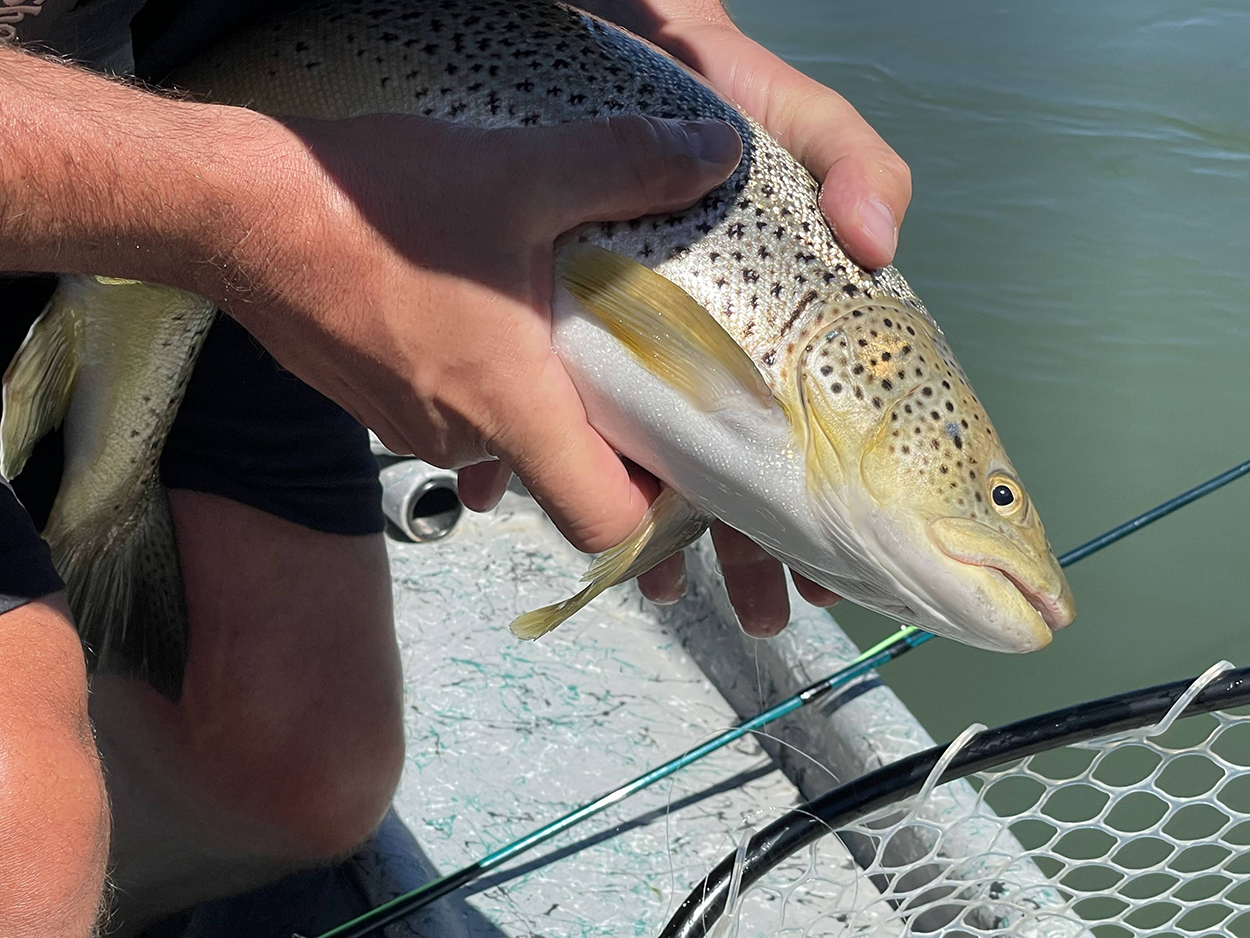
Some Things to Remember while Spring Fly Fishing
- The water is cold. Fish are cold blooded.
- Fish are not going to move too far or fast to take your fly.
- Get your flies low in the water column and keep that drift below the speed limit.
- Fish in a grid pattern. I always start closer to me, then move my casts out. X is where the Fly lands and Y is the current line you want to fish. A crude diagram below with the message to change up where you land that fly or indicator on the water.
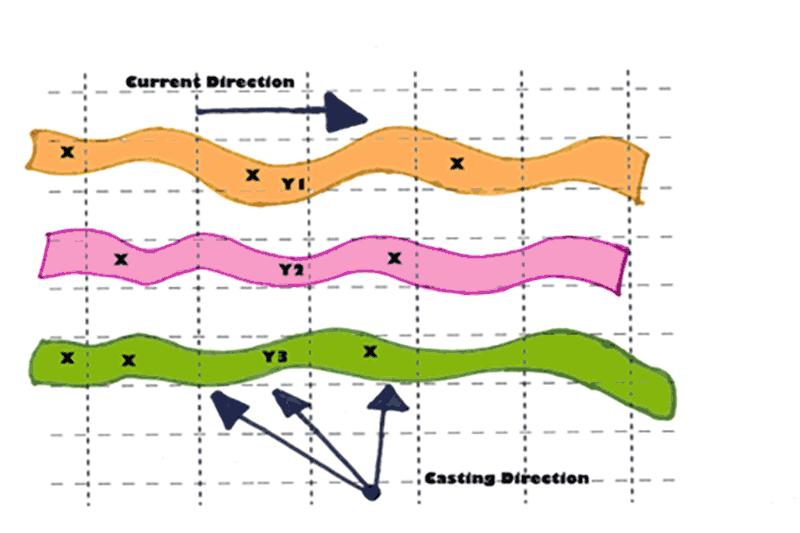
- Only cast as far as you can maintain good control. If you can’t mend effectively, shorten it up and move your feet to a better casting position.
- Depth is key. Before you change your fly selection, try moving that indicator or adding/subtracting some weight.
Rigs to Experiment with in the Springtime
A Simple Deep Water Nymph Rig. Play around with your distances between flies and where you place the weight. I use a swivel as weight and add split shot as needed. Usually, the weight depends on if I’m using tungsten or brass beads or unweighted flies.
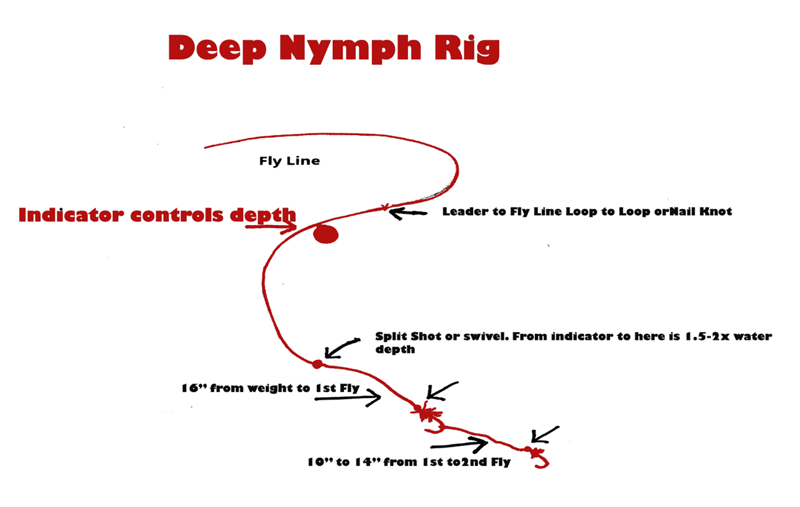
Dry Dropper
I’ll often nymph in shallow water in the early spring if the water speed is right. (Walking Speed) In these cases, it doesn’t make sense to me having the indicator, weight and all that gear in the water. I like to tie on a big foam fly as an indicator and then one or two flies below. I like this set up especially if I’m fishing water depth of 4 feet or less. I’ll often tie two nymphs below the foam fly. Play around with this set up to your preference. It’s effective and much nicer to cast. For new or beginner fly casters, you might not like this in the windy conditions that accompany Spring fishing.
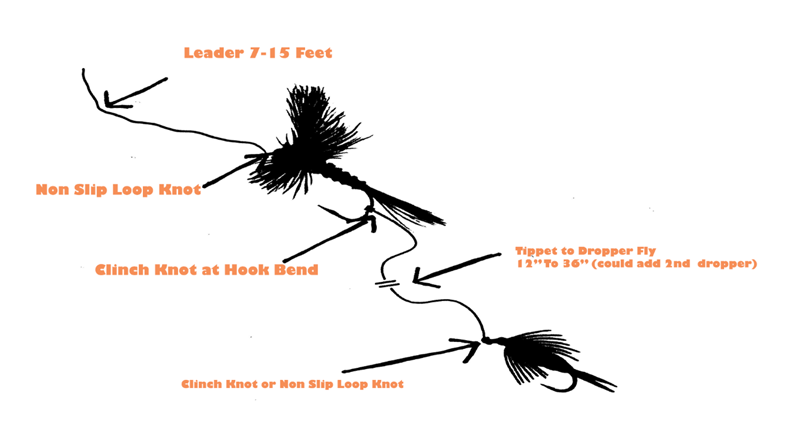
Some thoughts on Spring Presentations
During the early spring, I tend to slow down my presentations and work the water a little more diligently. Try to remember, fish are cold blooded, and the water is still cold in early April. Trout may not be willing to move very far for a fake meal. Be patient and methodical in your presentation. Fishy magic depends on what you do AFTER your fly lands on the water. I will always adjust my depth before I change my fly. I actually employ a dry dropper set up all year while fishing water less than 5 feet in depth. If I need to go deeper, faster, then I’ll throw on a bobber (Strike Indicator) 😊
Get out there and enjoy your water! Don’t be afraid to experiment with different presentations and work the water. It’s the best therapy I know.
If you’re looking to get into it, give us a look. We’ll introduce you to an amazing opportunity for endless adventure and lifelong learning.
